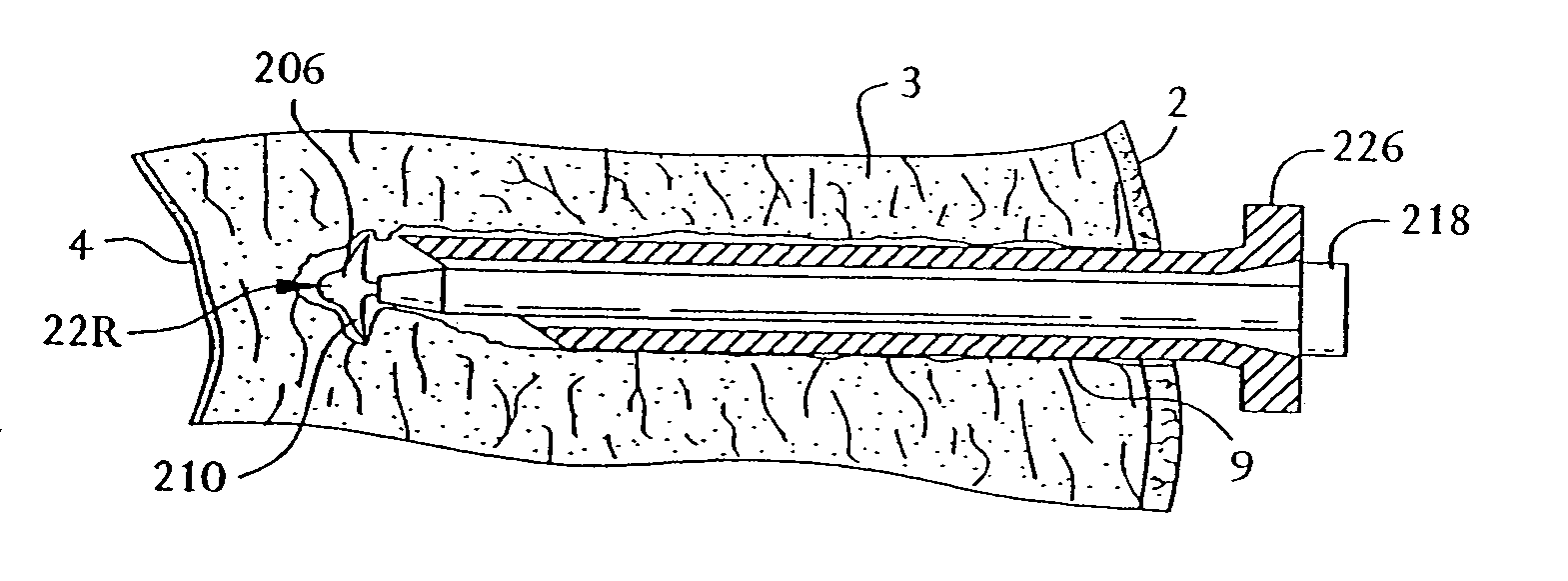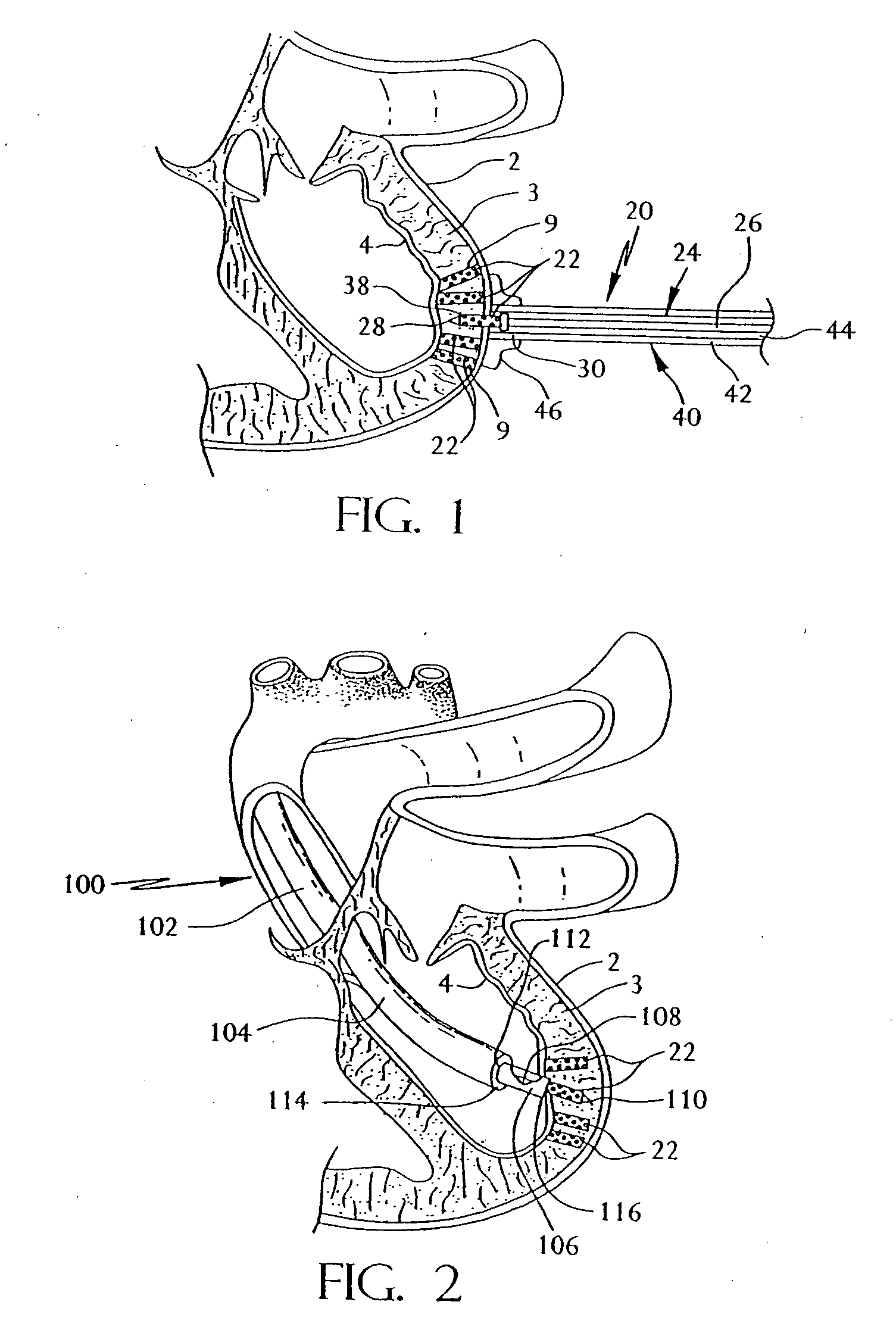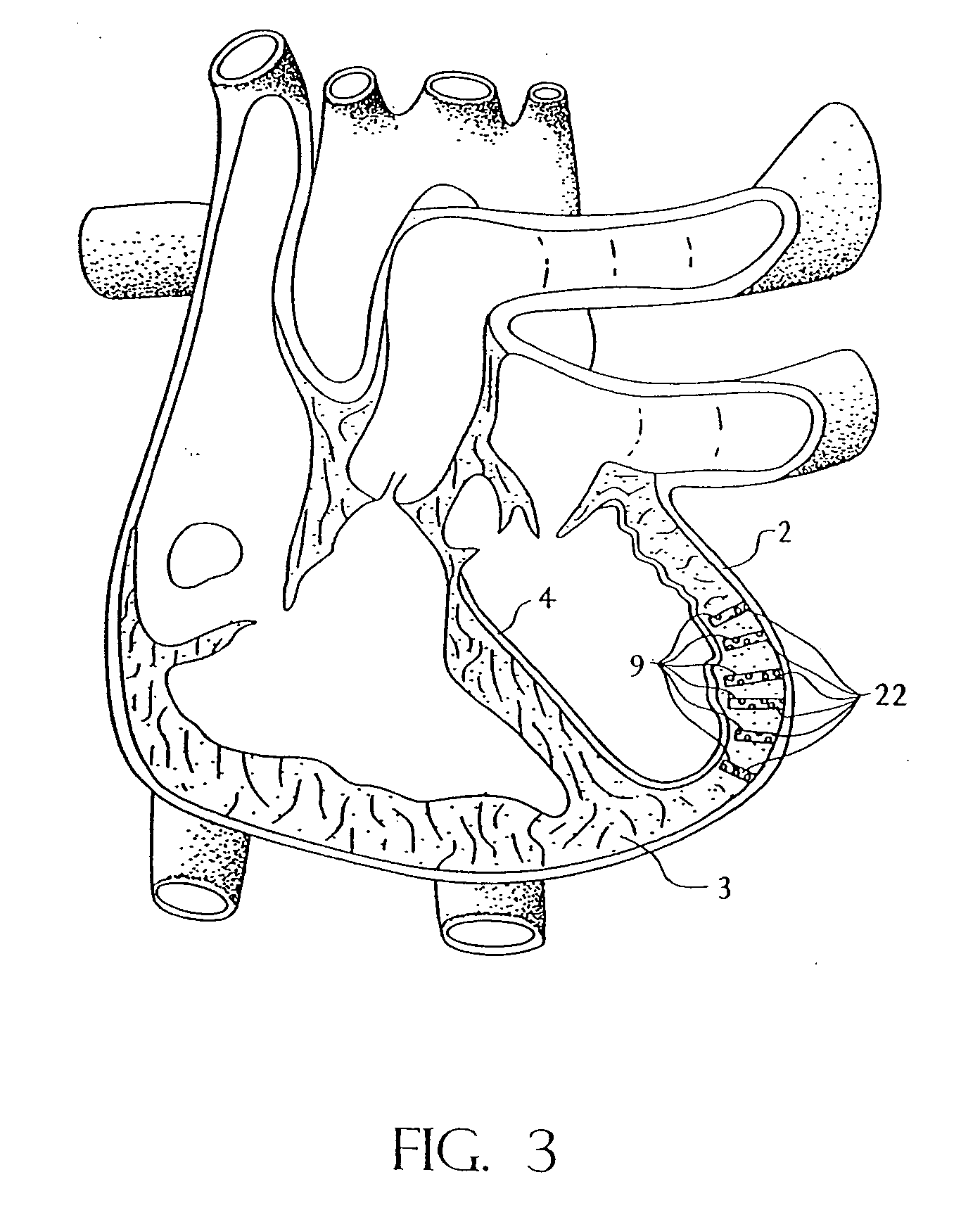Transmyocardial revascularization system and method of use
a transmyocardial revascularization and transmyocardial technology, applied in the field of medical systems and procedures, can solve the problems of prolonged rehabilitation time, high risk of patient death, and significant pain, and achieve the effects of minimizing pain sensation, improving perfusion, and reducing the cost of purchas
- Summary
- Abstract
- Description
- Claims
- Application Information
AI Technical Summary
Benefits of technology
Problems solved by technology
Method used
Image
Examples
Embodiment Construction
[0053] Referring now to the drawing where like reference numerals refer to like parts there is shown in FIG. 1 a transmyocardial revascularization system 20 constructed in accordance with this invention shown in the process of revascularizing the myocardium of a living, e.g., human, being. In FIG. 13 there is shown, by way of an illustration (not to scale), a section of the wall of the left ventricle of a healthy human heart 1. As can be seen therein the wall includes the epicardium 2, the myocardium 3, the endocardium 4, two unoccluded branches 5 and 6 of a coronary artery and extensive associated vasculature, e.g., capillaries 7. In FIG. 14 the illustration is of the same portion of the wall of the ventricle, but showing the effects of atherosclerosis, i.e., lesions or plaque deposits 8, in the branch vessels 5 and 6 and atrophied vasculature 7.
[0054] The revascularization systems of this invention are particularly suitable for revascularizing the myocardium whose blood supply ha...
PUM
 Login to View More
Login to View More Abstract
Description
Claims
Application Information
 Login to View More
Login to View More - R&D
- Intellectual Property
- Life Sciences
- Materials
- Tech Scout
- Unparalleled Data Quality
- Higher Quality Content
- 60% Fewer Hallucinations
Browse by: Latest US Patents, China's latest patents, Technical Efficacy Thesaurus, Application Domain, Technology Topic, Popular Technical Reports.
© 2025 PatSnap. All rights reserved.Legal|Privacy policy|Modern Slavery Act Transparency Statement|Sitemap|About US| Contact US: help@patsnap.com



